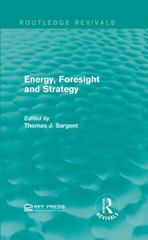The Eurozone economy Figure 1: Exchange rate of the euro (() to the British pound (E) 1.00 0.95 0.90 - price of one euro 0.85 in pounds 0.80 - 0.75 - 0.70 - 0 - 2007 2008 2009 2010 2011 2012 2013 2014 2015 2016 Yeargure 2: Eurozone inflation rate as measured by the Consumer Prices Index (CPI) 3.25 3 2.75 2.5 2.25 Annual 2 percentage change 1.75 in prices 1.5 1.25 0.75 0.5 0.25 0 2011 2012 2013 2014 2015 YearExtract A European Central Bank disappoints markets with weaker than expected stimulus Mario Draghi, president of the European Central Bank (ECB), surprised financial markets in November 2015 with a less ambitious package of monetary stimulus than many had anticipated. The ECB cut its base interest rate by 0.1% to minus 0.3% in order to encourage private banks to lend funds to companies and households rather than deposit them at the central bank. The central bank agreed to extend its E60 billion (E45 billion) monthly bond-buying quantitative easing (QE) programme for a further six months. The ECB's E1.1 trillion QE scheme had originally been due to end in September 2016. "We are doing more because it works," Mr Draghi said. Yet the ECB did not increase the size of its monthly asset purchases and also disappointed those expecting that it would cut interest rates more aggressively. The euro rose almost 3% against the dollar to $1.08 after the announcement. Italian and Spanish bond yields both jumped by 0.27% to 1.62% and 1.72% respectively. The ECB's economists reduced their inflation forecasts for the next two years. They now predict consumer prices in the Eurozone rising by just 1% in 2016 and 1.6% in 2017 - still below the central bank's ceiling of 2%. In November 2015, the inflation rate was just 0.1% and core inflation, excluding volatile items such as fuel and food, dropped to 0.9%. Mr Draghi stressed again that monetary policy alone could not restore the Eurozone to economic health. He called for looser fiscal policy among member states to support aggregate demand and more rapid implementation of supply-side reforms. "In order to reap the full benefits from our monetary policy measures, other policy areas must contribute decisively," he said









